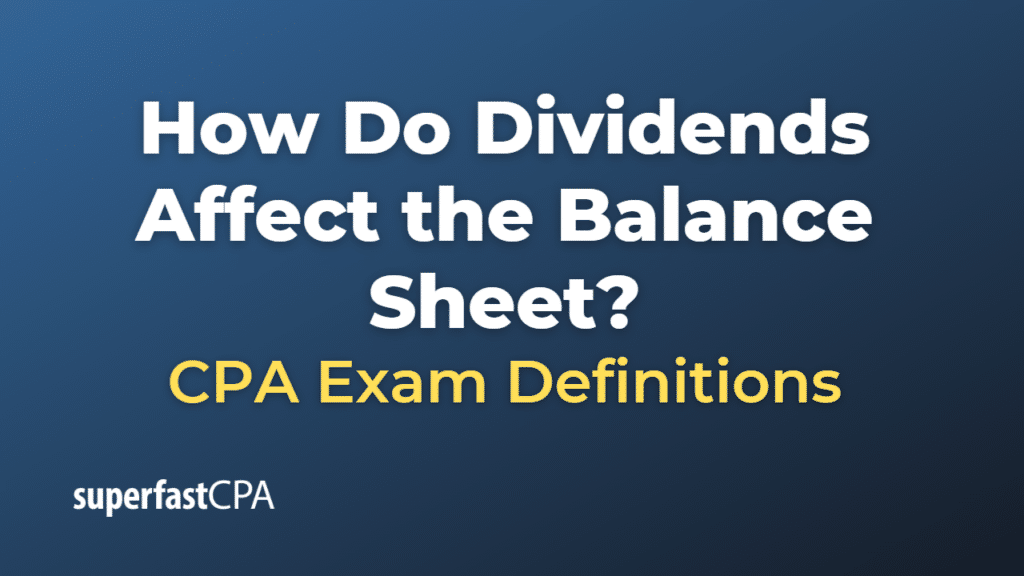How Do Dividends Affect the Balance Sheet
When a company declares a dividend, it has an impact on the company’s balance sheet, specifically the shareholders’ equity and current liabilities sections. Here’s how it works:
- Declaration Date: On the date that a dividend is declared by the board of directors, the retained earnings account (part of shareholders’ equity) is decreased, and the dividends payable account (part of current liabilities) is increased by the same amount. At this stage, no cash has yet been paid out, but the company has created a liability (dividends payable) because it now owes this money to shareholders.
- Payment Date: On the date the dividend is actually paid, the company’s cash account (part of current assets) decreases by the total amount of the dividend paid. Simultaneously, the dividends payable account also decreases by the same amount, reflecting that the company has fulfilled its obligation to its shareholders.
It’s important to note that dividends do not directly affect the income statement as they are not an expense. Instead, they are distributions from retained earnings to shareholders. However, because dividends reduce retained earnings (and therefore total shareholders’ equity), they indirectly impact a company’s return on equity, which is a profitability metric calculated using net income and shareholders’ equity.
Remember that paying dividends can affect a company’s liquidity position. Even a profitable company may find itself short on cash if it pays out too much in dividends without ensuring sufficient cash inflows.
Example of How Dividends Affect the Balance Sheet
Let’s say a fictional company, “Healthy Harvest Inc.”, declares a cash dividend of $1,000,000 to its shareholders. Here’s how it affects the balance sheet:
On the Declaration Date:
On the date the dividend is declared, two things happen:
- The retained earnings, which are part of shareholders’ equity, decrease by the amount of the dividend declared. Assuming the company’s retained earnings were initially $10,000,000, they would reduce to $9,000,000 ($10,000,000 – $1,000,000).
- A dividends payable liability of $1,000,000 is recognized on the balance sheet under current liabilities.
No cash has been paid yet; the company has simply acknowledged its obligation to pay the dividend.
On the Payment Date:
On the date the dividend is actually paid out:
- The company’s cash balance, which is a current asset, decreases by the amount of the dividend paid. If the initial cash balance was $5,000,000, it would now be $4,000,000 ($5,000,000 – $1,000,000).
- The dividends payable liability is removed from the balance sheet because the company has fulfilled its obligation to pay the dividend. The dividends payable would now be $0.
This process shows the impact of dividend declaration and payment on different parts of the balance sheet, specifically retained earnings, dividends payable, and cash.













